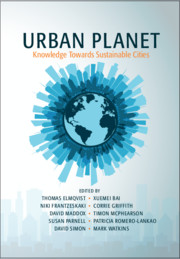The Sustainable Development Goals (SDGs) are ambitious in what they set as goals and targets: eliminating poverty; universally providing risk-reducing infrastructure and services; ensuring access to safe, adequate housing and justice; and so forth – and all by 2030. But the SDGs say little about how, by whom, and with what support this transformation is to be accomplished. There is also little discussion of systemic change – implying that the national governments and international agencies that have failed to meet so many goals and targets in the past can now transform their approaches and effectiveness. We have over 40 years of promises going back to Habitat I, the first UN Conference on Human Settlements, where all government representatives endorsed recommendations such as the universal provision for water and sanitation. There are actually many nations that had a lower proportion of their urban population with water piped to premises in 2015 than in 1990. Most urban centers in Africa and Asia have no sewers or other means to safely collect and dispose of human excreta or, if they do, these serve a small percentage of the population.
Most SDGs and their targets for urban areas are entirely or in part the responsibility of local governments. Of course, the actual division of responsibilities between municipal/city/metropolitan governments and higher levels of government varies largely by nation. In most, however, urban governments have responsibilities relevant to housing quality, land use, infrastructure (local roads, drains, piped water, and excreta management), and services (schools, primary health care, solid waste collection, policing, and emergency services). However, urban governments were not invited to make commitments to the SDGs.
The SDGs emphasize the need for new data to support and monitor progress, but this is data for national governments. It is not for generating the data that every urban government needs to be more effective, such as which neighborhoods and streets lack needed infrastructure and services, which diseases and causes of injuries and premature deaths within their jurisdiction need attention, and which settlements have high infant, child, and maternal mortality rates.
The most important actors for meeting the SDGs in urban areas are urban governments working with their citizens and civil society organizations. The majority of cities that have performed best in relation to past goals are in Latin America. These were driven by well-functioning local democracies and a new generation of elected mayors committed to their city and its citizens. This success was bolstered by measures such as participatory budgeting that gave citizens the right to prioritize what public investments were made in their neighborhoods. Of course, there is still much to do in Latin America and places where there is little progress, but there are enough cities that have shown new possibilities. Most drew not at all on international agencies.
Then there is what is perhaps the most important change in much of Africa and Asia: in over 30 countries, there are now organizations and federations of slum/shack dwellers or homeless people. At their foundation are savings groups mostly formed and managed by women. These federations have chosen a different strategy of protest. They recognize that they have to change the way that local governments and international NGOs view them. So they come to local governments and offer them their knowledge and capacity. They show local governments how they can design, build, and manage community toilets more effectively and efficiently than local public works or private contractors. They have shown an amazing ability to document and map each informal settlement in a city – data that local governments usually lack and have difficulty collecting.
These slum/shack dweller groups have shown their capacity to build good quality housing and manage upgrading. Some have even shown how to manage unavoidable large-scale relocations in ways that did not impoverish those who were moved – as in the work of the Kenyan and Indian federations managing the relocation of those living close to the railway tracks. Both federations negotiated smaller setbacks on each side of the rail lines so fewer people had to move. Now there are over 100 local governments that work with them, which increase the scale of what they can achieve. There is also the example of the Asian Coalition for Community Action that has catalyzed over a thousand community initiatives in 165 cities in 19 countries all over Asia. The coalition also helps each initiative join with others in its city to press local government to work with it.
Where are the needed responses from the SDGs for supporting the work of these slum/shack dweller groups? The federations have their own funds that are carefully managed and through which external support could be channeled. The umbrella group to which they belong (Slum/Shack Dwellers International) also manages an international fund to support member federations. Why do most international agencies ignore these? How can they claim to be participatory and accountable when they won’t work with and support representative organizations of the urban poor and their partnerships with local governments? What transformations would be possible if community-driven responses to the SDGs got just 1 percent of development assistance each year (around a billion dollars)?



